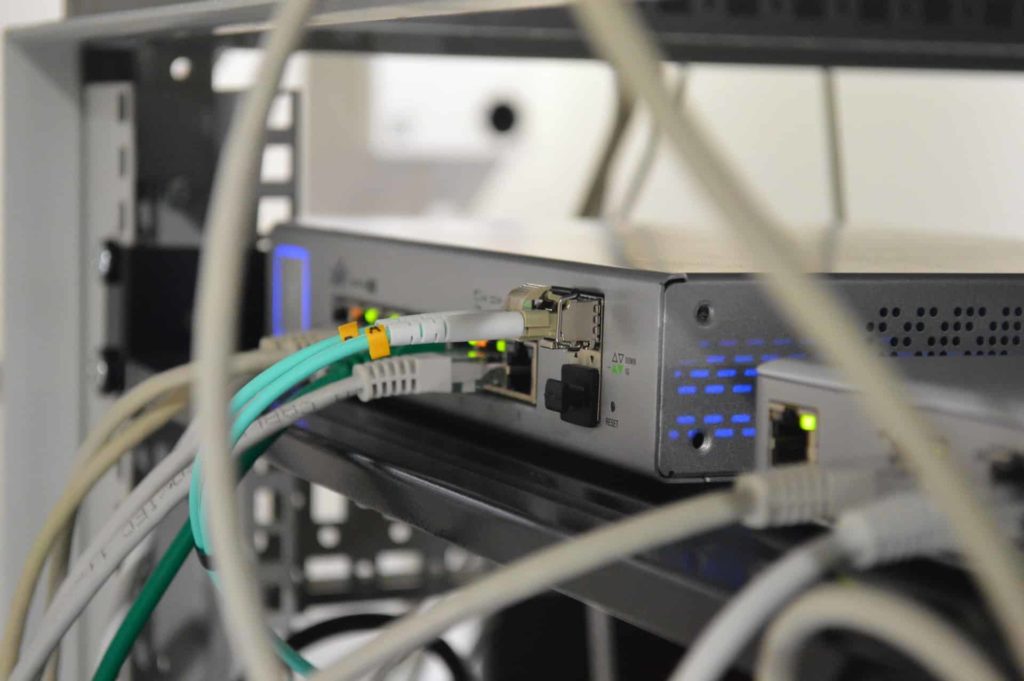Businesses spend up to 7% of their total budget on IT investments. There are other costs as well, such as building a network. The smaller a business is, the more its budget will go towards these expenditures. We all know technology is expensive, but is there any way to reduce the cost?
This is where OpenConfig comes into play. What is OpenConfig, and how can it help you? Let’s break down what you need to know.
Vendors and OpenConfig
A network is only as good as the pieces that make up the infrastructure for that network. This means you have a choice to make. Would you like to use a single vendor, or would you instead use a multi-vendor approach? There are pros and cons to each.
The technology that goes into networking can be overwhelming to the uninitiated. New devices and applications come out from different vendors all the time. You can use components from only one vendor, but there are advantages to diversifying technology. So how does OpenConfig fit into this eco-system?
The answer to this question involves understanding what OpenConfig is. How it can be integrated with data centers and network operations, and what is so important about having an independent software layer.
Related: Data Center Infrastructure: What You Need to Know
History of OpenConfig

The history of OpenConfig goes back to the late nineties and early 2000s when the need for such software became apparent. The only options back then were single-vendor solutions powered by proprietary software. This meant that you would face conflicts and errors if you tried to do a multi-vendor network.
OpenConfig started as a collection of YANG data models, which it still is today. These were combined to remove the need for translation between models and coordinate network management. In the 2010s, OpenConfig became the industry standard for network management solutions.
Do you want a network management solution that works with any vendor? If you want a network that stays up and doesn’t experience significant downtime, OpenConfig is your best bet. C&C Technology Group can help you get the technology solutions that you need.
What Is OpenConfig?

OpenConfig is a vendor-independent software layer that manages network devices. This is an essential component of a multi-vendor solution. This enables you to put together pieces of any vendor you want, and they will operate together without critical errors or crashes.
One of the best aspects of OpenConfig is that it is an open-source project. Network administrators, vendors, and the IT community at large are responsible for creating and updating it. This allows for OpenConfig to be updated with new technologies and compatibilities as they are required.
OpenConfig allowed for the removal of the translation layer between various single-vendor software and the network itself. This reduces downtime and improves the performance of the network.
Other benefits of OpenConfig include easy license arrangement and a robust community that can help with support. This all combines to make OpenConfig an excellent choice that exceeds what most proprietary management software can accomplish.
Related: 7 Data Center Trends Changing the Industry in 2023
Beyond Management Software
One of the great benefits of OpenConfig is that it offers additional services beyond network management. It can also provide streaming data, such as telemetry. This allows every device on the network to be observed and monitored. You can get capabilities like this on a subscription basis.
Users create data models to address concerns or needs on an individual basis. This helps cater the software layer of your network to your specific needs and requirements. You don’t have to try to use a one-size fits all approach. Since the software is open source, programmers put out regular updates and changes.
What Is a Multi-Vendor Network?
When deciding on the infrastructure of a business, the most important decision to be made for IT is whether it’ll implement a single-vendor or multi-vendor network.
A single-vendor environment means that the business only utilizes one vendor. However, a multi-vendor network is when a business uses a combination of different tools from two or more vendors in its IT infrastructure.
There are many pros to investing in a multi-vendor environment. A multi-vendor network:
- Gives a business the opportunity to use best-in-breed products
- Offers agility in choosing the best solutions that solve its pain points
- Introduces the potential for cost savings
- Ensures there is always ease of procurement for any needed tools
All these reasons and more are why most businesses have begun to shift toward a multi-vendor environment. By doing this, a business can enhance performance optimization and always have the flexibility to pivot as required when the industry starts to shift.
If you want to have all the advantages of a multi-vendor network with the ease and effectiveness of OpenConfig, C&C Technology Group can help. All you need to do is contact us online or at (888) 263-5672.
OpenConfig Is Paving the Way for Automated Configuration

Advancements made over the past few years have seen an improvement in how network configuration functions. One of the single biggest upsides to using OpenConfig is its automation power. For a data center, it has the ability to reduce configuration time from weeks to minutes.
A myriad of vendors are already participating in OpenConfig as well, ensuring businesses will have their pick of the lot. Ultimately, the goal of OpenConfig is to support real-world use cases that are based on feedback. It shouldn’t come as any surprise that this is driving wide scale adoption and inspiring more vendors to have native OpenConfig support.
More and more, OpenConfig is becoming an industry standard API for network elements. If you believe you would like to implement OpenConfig into your business model, then C&C Technology Group is here to support you every step of the way.
Related: Best Guide to Data Storage Management [2023]
Last Updated on June 8, 2023 by Josh Mahan




